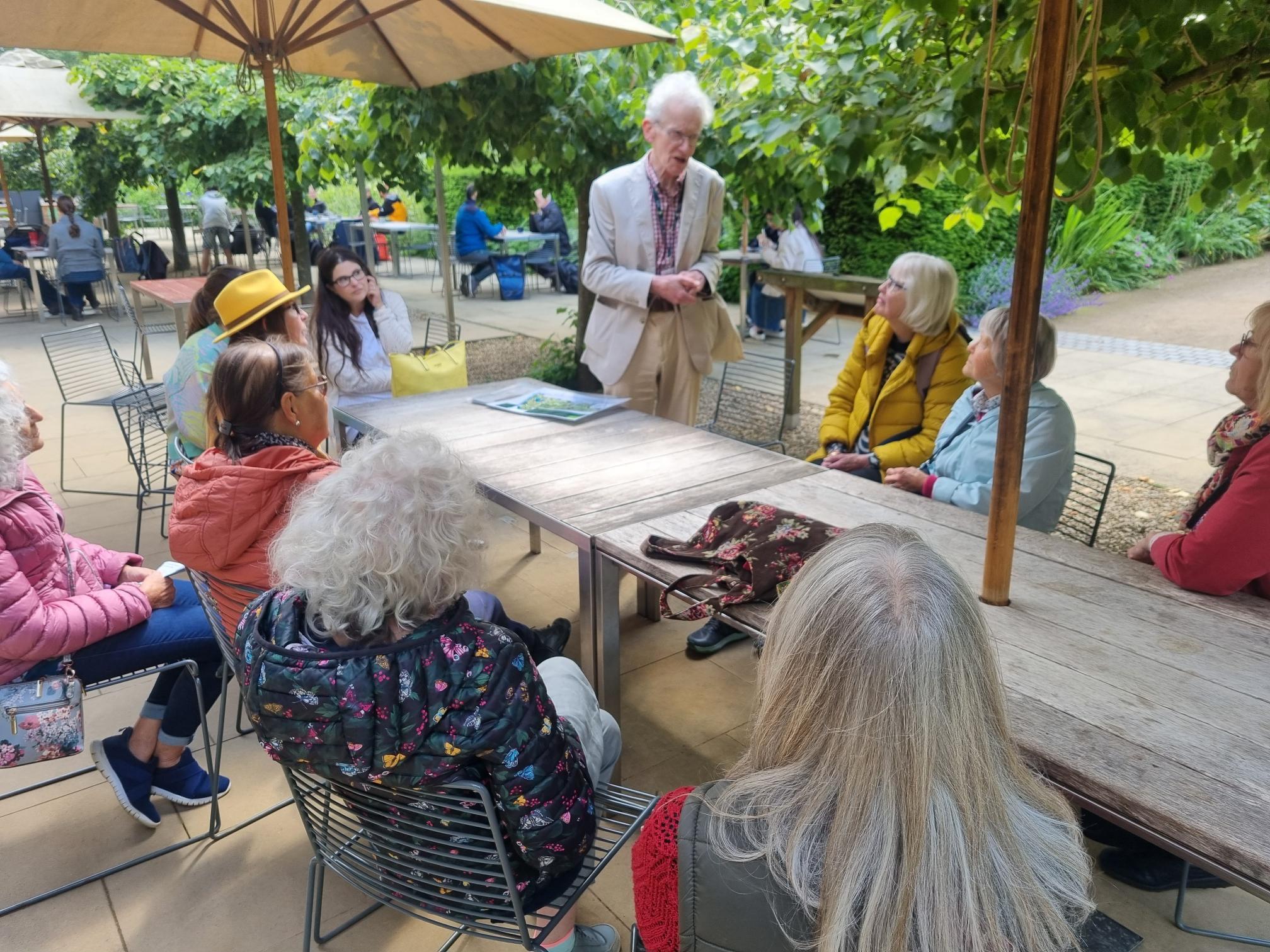IBA visits Cambridge Botanical Gardens
On Wednesday 5th June, a fairly sunny but really chilly day, 11 members of Iceni Botanical Artists gathered together at Cambridge University Botanical Gardens for a tour led by Richard Price, Botanist and Volunteer guide. Richard was a mine of interesting and fascinating information with a magnifying glass in his pocket. A very handy gadget and a good tip for all of us who like painting flowers.

Richard began by telling us how the garden was created for the University on this present site by Professor John Stevens Henslow, mentor to Charles Darwin, in 1831, and opened to the public in 1846. The first Botanic garden was established in 1760 right in the centre of Cambridge on land occupied by part of the old Augustinian Friary.
The pretty little White House near to the cafe, Cory Lodge, was built in 1924 and was the residence of the Director of the gardens and the last Director kept a Donkey in the garden. Sadly the building now contains just offices. The Sainsbury Laboratory was opened by our late Queen in 2011 and is a place for research into the self organising properties of plants.

He then explained how to read those formidable little plaques that stand guard next to each plant. They give plant names, country of origin, whether acquired from the wild or from another garden and the year it was planted i.e. either say ‘1920’ , or ‘don’t know’ which is 1,000.
Then we moved on to a magnificent tree laden with big cushions of little white flowers. Richard pointed out something that probably we never even think about and that is just how much plants invest in producing every little stalk and flower and petal. Every tiny part that makes up the whole, all leading to its overall purpose of both its own survival and producing seeds to carry on the overall survival of the species. No wonder plants need a proper rest over winter time.

When Richard took out his pocket magnifying glass whilst trying to shake some tiny seeds out of a red wood fir cone, Reinhild pointed out how sometimes Botanical artists can assist Botanists by noticing tiny details whilst painting that they themselves might have missed.

Along the way Richard spotted a tiny wispy little thing with minute cruciform flowers that could easily be dismissed as an insignificant ‘weed’. When, actually, it is of huge importance to scientific research. I think it is called ‘ Arabidopsis Thaliana.’ Thale Cress. (please correct me if I’m wrong) It has a tiny genome that is an important tool in understanding the molecular biology of many plant traits and is actually grown in the Sainsbury Laboratory for the purposes of study.

Then there was the little known story of that great garden thug the Leylandii. The most astonishing fact is that we only have ourselves to blame for its existence.

Our great and good Victorian plant hunters, who introduced us to so many lovely plants, also brought back the Monterey Cyprus from one side of America and the Nootka Cyprus from the other side of America. Planted them within pollinating distance from each other and of course the inevitable happened. So the giant of all giants was here to stay and, being literally ‘made in Britain’ it can truly be called a tree that is a native of the British Isles
.
Our tour ended with the prettiest story of all. The Indian Horse Chestnut. Splendidly decked out in showy candles of fluffy pink and white flowers and yellow and white flowers. Why the colour mix? First each flower is yellow and white . Bees dive in guided by the colour yellow and pollinate the flower. And then the magic happens. The flower’s purpose has been fulfilled, the yellow disappears and the petals are splashed with lipstick pink, a colour the bees can’t see and so they use their energy in only going where they’re needed.
So after our amazing tour we had lunch at the cafe where we were able to all fit round the same long table. It was a lovely opportunity for a catch up and chatting to new members, making them feel welcome and part of our group.

After lunch we visited the magical Greenhouse, a favourite with everyone. Always some new treasure to see and at this time of the year the amazing Jade Vine, bright turquoise like a colour straight out of a kiddies paintbox. And much discussion about what colours to use if you want to paint it.
And so ended our lovely day. With many thanks to Richard Price our excellent guide. And many thanks to Reinhild for organising the trip for us. We really really enjoyed it.
Words: Doreen Taylor Pictures: Matthew Peace





